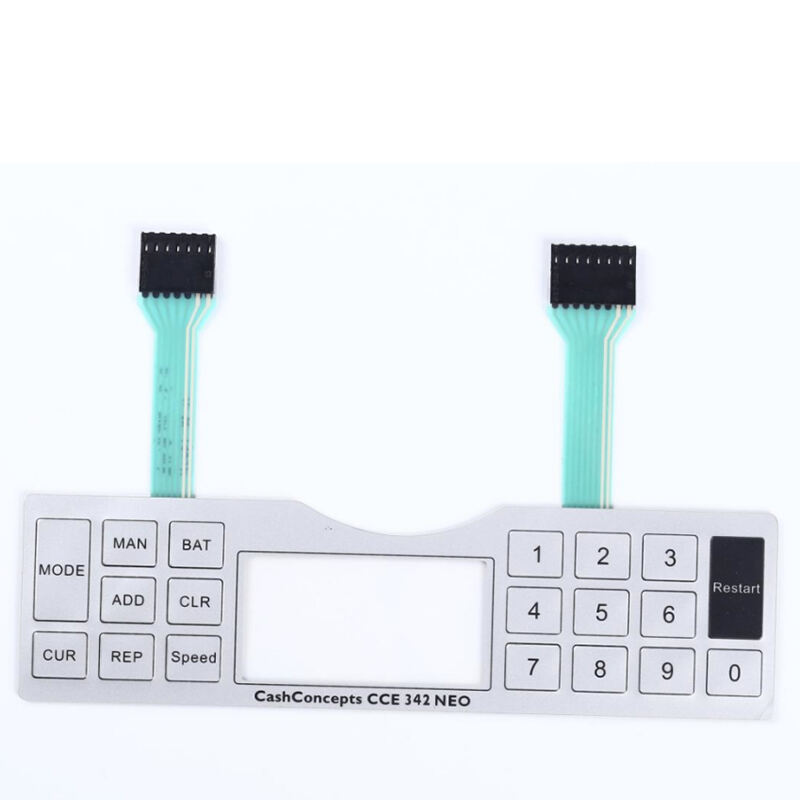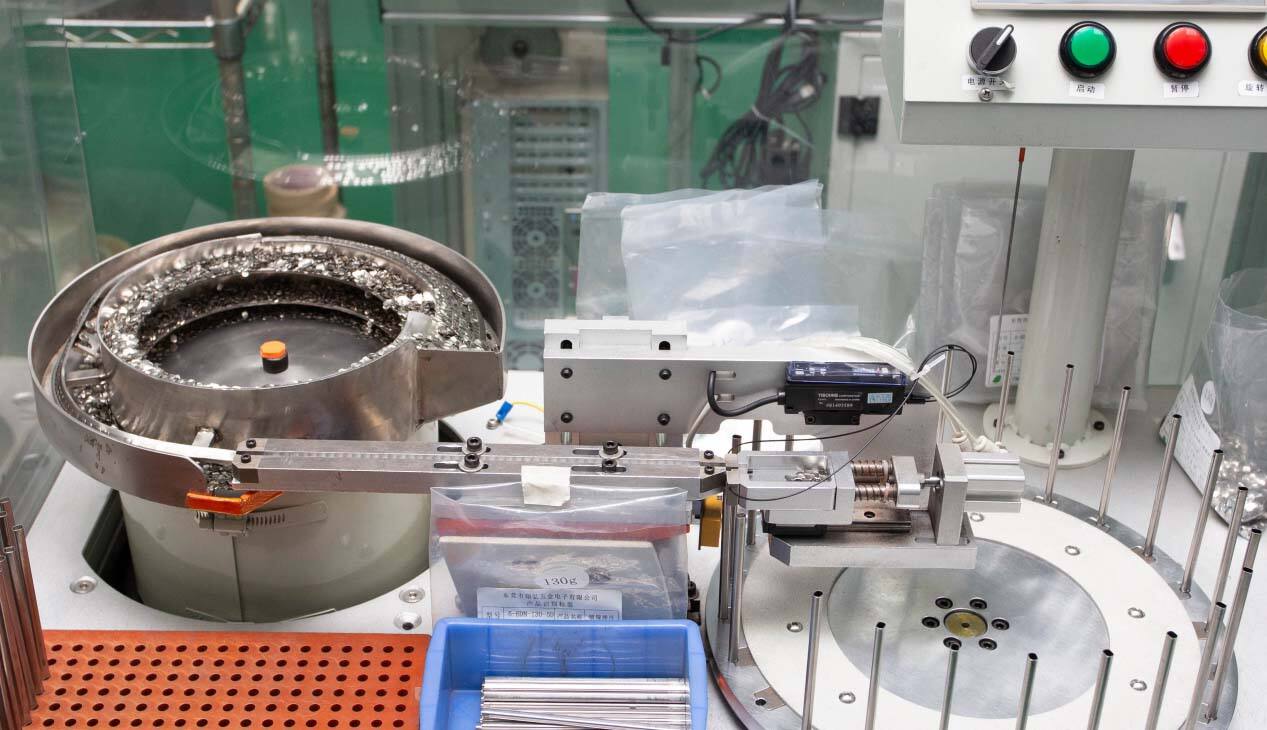Como os interruptores de membrana revolucionaram o sistema de controle automotivo?
A Evolução dos Sistemas de Controle Automotivo com Interruptores de Membrana
Da Botões Mecânicos aos Painéis de Interruptores de Membrana
A transição dos botões mecânicos tradicionais para painéis de interruptores de membrana marca uma evolução significativa no design de veículos. Os interruptores de membrana tornaram-se cada vez mais populares devido ao seu apelo estético e à capacidade de melhorar o design da interface do usuário. Ao contrário dos botões mecânicos volumosos, os interruptores de membrana oferecem um visual elegante e moderno, tornando-os uma escolha ideal para interiores de carros contemporâneos. Além disso, a natureza flexível desses interruptores permite que se integrem perfeitamente em superfícies curvas, melhorando a ergonomia e o apelo geral do design do veículo. Essa adaptabilidade não só contribui para uma melhoria na estética, mas também facilita interfaces mais intuitivas e amigáveis ao usuário, que estão em alta demanda entre os consumidores.
Principais Fatores de Adoção nas Interfaces de Veículos
A adoção de interruptores de membrana nas interfaces de veículos é impulsionada principalmente por avanços tecnológicos e pelas demandas dos consumidores por designs modernos e interfaces intuitivas. Esses interruptores oferecem várias vantagens em relação aos sistemas mecânicos tradicionais, incluindo maior satisfação do usuário e melhorabilidade aprimorada. Os consumidores estão cada vez mais buscando veículos com recursos avançados que proporcionem interação fluida e opções de personalização. Estudos indicam um aumento na satisfação do usuário associada a veículos que incorporam tecnologia inovadora de interruptores de membrana, destacando a demanda por esses sistemas de controle modernizados. A integração de interruptores de membrana no design automotivo é, portanto, uma resposta às necessidades dos consumidores por melhorias estéticas e eficácia funcional.
Principais Vantagens dos Teclados de Interruptores de Membrana em Veículos
Durabilidade Contra Fatores Ambientais
Teclados de interruptores de membrana nos veículos se destacam pela notável durabilidade contra fatores ambientais. Seu design os protege contra temperaturas extremas, umidade e poeira, garantindo confiabilidade em condições adversas. Testes de laboratório demonstram consistentemente sua capacidade de funcionar de forma ótima, mesmo quando expostos a esses elementos por períodos prolongados. Essa durabilidade aumenta significativamente o ciclo de vida dos controles automotivos, reduzindo os custos de manutenção para fabricantes e proprietários de veículos. Ao utilizar interruptores de membrana, fabricantes de automóveis podem oferecer veículos com sistemas de controle robustos e confiáveis, projetados para suportar as exigências dos ambientes de direção cotidianos.
Design Econômico de Espaço para Painéis Modernos
Um dos principais recursos dos painéis de interruptores de membrana é seu design eficiente em termos de espaço, que é ideal para painéis de instrumentos modernos. O perfil fino desses interruptores permite uma estética de painel de instrumentos mais enxuta sem comprometer a funcionalidade. Essa eficiência no uso do espaço é crucial para melhorar o fluxo de ar e a visibilidade dentro do veículo, proporcionando uma experiência de direção mais confortável. Especialistas da indústria frequentemente enfatizam a tendência para o minimalismo e a funcionalidade no design automotivo, e os interruptores de membrana desempenham um papel fundamental nessa tendência. Ao adotar painéis de interruptores de membrana, fabricantes de automóveis podem criar interiores de veículos elegantes que harmonizam forma e função para a máxima satisfação do motorista.
Custo-benefício na produção em massa
Teclados com interruptores de membrana oferecem uma significativa eficiência de custo na produção em massa. Em comparação com sistemas tradicionais, o processo de fabricação de interruptores de membrana envolve menos componentes complexos, resultando em custos de produção reduzidos. Essa escalabilidade na produção se alinha perfeitamente com a demanda da indústria automotiva por soluções de fabricação eficientes. Estudos da indústria destacam as substanciais economias de custo que os fabricantes podem alcançar ao implementar tecnologia de membrana nos controles de seus veículos. Essa abordagem não só mantém os custos de produção mais baixos, mas também permite que os fabricantes transfiram essas economias aos consumidores, tornando os veículos mais acessíveis e econômicos.
Interruptores de Membrana à Prova d'Água: Uma Inovação Automotiva Crítica
Design Selado para Condições de Direção Severas
Interruptores de membrana à prova d'água utilizam tecnologia de vedação avançada para proteger sistemas automotivos de derramamentos e elementos ambientais. O design vedado protege contra umidade, poeira e temperaturas extremas, garantindo que os interruptores permaneçam operacionais mesmo em condições adversas. De acordo com relatórios do setor, esses interruptores melhoram significativamente a segurança e a satisfação do consumidor, oferecendo aos motoristas controle confiável em ambientes desafiadores. Além disso, interruptores de membrana à prova d'água contribuem para elevados padrões de segurança no setor automotivo, oferecendo soluções resilientes para veículos modernos.

Integração com Eletrônica Avançada de Veículos
Interruptores de membrana à prova d'água se integram suavemente com a eletrônica moderna dos veículos, melhorando a funcionalidade e eficiência geral. À medida que os veículos cada vez mais dependem de interfaces digitais, particularmente nos modelos elétricos e híbridos, esses interruptores são essenciais para manter uma comunicação confiável dentro de sistemas eletrônicos complexos. Estudos de caso da indústria destacam implementações bem-sucedidas por fabricantes que priorizam designs inovadores de interruptores para alinhar-se com avanços digitais. Essa integração apoia a transição da indústria automotiva para veículos mais sofisticados, definidos por software e equipados com componentes digitais avançados.
Aplicações Automotivas da Tecnologia de Interruptor de Membrana
Agrupamentos de Controle do Painel
Os interruptores de membrana tornaram-se fundamentais nos clusters de controle do painel de instrumentos automotivos, melhorando significativamente a experiência do usuário. Eles facilitam a operação de funções essenciais, como controle climático e sistemas de entretenimento, oferecendo respostas táteis suaves, permitindo que os motoristas mantenham o foco na estrada. Com a crescente tendência de painéis personalizáveis, as tecnologias de membrana agora oferecem designs altamente adaptáveis ajustados às preferências do motorista, melhorando a interação e o controle do veículo. Como evidência de sua eficiência, esses interruptores permitem um acesso mais rápido às informações, otimizando tanto a conveniência quanto a segurança do motorista ao minimizar distrações.
Interfaces do Sistema de HVAC
Painéis de interruptores de membrana revolucionaram a interface do usuário dos sistemas de HVAC em veículos. Esses painéis oferecem um design moderno e amigável, com recursos como sensibilidade ao toque e feedback visual, tornando o ajuste dos controles climáticos intuitivo e eficiente. Os usuários apreciam a natureza touch-responsiva desses interruptores, que permite um controle preciso, além das indicações visuais que confirmam as seleções feitas – atributos que resultaram em uma ampla aceitação e preferência por esses sistemas em vários cenários do mundo real. A adaptabilidade e facilidade de uso associadas aos interruptores de membrana os posicionaram como a escolha preferida para sistemas climáticos automotivos.
Gerenciamento de Energia de Veículos Elétricos
Em veículos elétricos (EVs), interruptores de membrana desempenham um papel fundamental na gestão das configurações de energia, permitindo um controle eficaz do consumo de energia. Integrados de forma seamless, esses interruptores ajudam os usuários a ajustar o uso de energia rapidamente, contribuindo para a eficiência e ambiência do veículo. Com avanços contínuos na tecnologia de interruptores de membrana, os sistemas de gerenciamento de energia em EVs continuam a evoluir, resultando em controles sofisticados que melhoram a distribuição de energia ao longo do veículo. O desenvolvimento contínuo nesta área garante que esses sistemas permaneçam na vanguarda da eficiência veicular e conveniência do usuário, complementando o movimento mais amplo em direção à mobilidade sustentável.
Inovações Futuras em Painéis de Interruptores de Membrana para Veículos
Integração com Sistemas de Direção Autônoma
A integração da tecnologia de interruptor de membrana dentro dos sistemas de direção autônoma pode revolucionar os controles dos veículos. À medida que os veículos se tornam mais autônomos, o painel tradicional está sendo reimaginado para incorporar interfaces suaves, potencialmente com interruptores de membrana. Essas inovações podem abrir caminho para paradigmas de interação avançados, incorporando suporte a gestos no ar e feedback multimídia, permitindo que os motoristas interajam com o veículo de forma mais intuitiva e com mínima distração. Especialistas no campo automotivo preveem que essas integrações transformarão a experiência de direção, fornecendo um modelo de interação mais intuitivo, responsivo e amigável ao usuário à medida que os veículos avançam em direção à plena autonomia.
Desenvolvimentos de Feedback Tátil Aprimorado
Os avanços na tecnologia de feedback tátil estão sendo cada vez mais integrados aos painéis de interruptores membranosos, melhorando o envolvimento e a satisfação do usuário. Esses desenvolvimentos oferecem aos usuários uma interação mais responsiva e realista ao simular as sensações táteis de botões físicos. As tendências da indústria indicam um crescimento no uso de tecnologias hápticas, que proporcionam uma interação aprimorada permitindo que os motoristas mantenham o foco na estrada enquanto recebem confirmação física de suas entradas. Essa mudança em direção a um feedback tátil mais sofisticado alinha-se à tendência mais ampla de melhorar a experiência do usuário por meio do engajamento sensorial, tornando os interruptores membranosos não apenas funcionais, mas também mais envolventes e satisfatórios de usar.

 EN
EN
 AR
AR
 FR
FR
 DE
DE
 IT
IT
 JA
JA
 KO
KO
 PT
PT
 RU
RU
 ES
ES
 VI
VI






